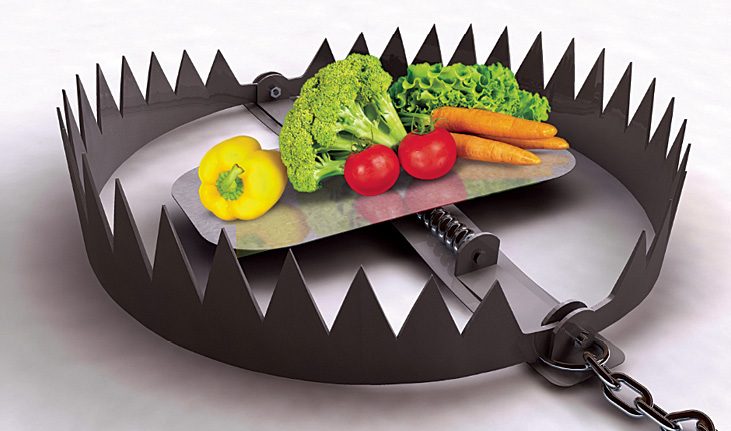Eating disorders are dangerous, but treatable, mental and physical illnesses. They change the ways that a person thinks and behaves in relation to food, eating, and how they feel about their body.
Anorexia Nervosa is most often recognized by its dramatic weight loss and intense fear of weight gain or being fat. People may severely limit the foods they eat, believe they are much bigger than they really are, and worry a great deal about that belief. They may not understand or accept the seriousness of their illness.
Bulimia Nervosa is diagnosed when someone frequently binges (eating large amounts of food in a short period of time) and then purges (making themselves vomit, taking laxatives or diuretics). They often will try to “cancel out” the food they binge by fasting or exercising excessively. While someone is binging, they feel a loss of control over their eating.
Binge Eating Disorder is when someone frequently binges, but doesn’t follow that with purging. They feel a loss of control, guilt and distress. This is the most common eating disorder in the United States.
Avoidant/Restrictive Food Intake Disorder (ARFID) means that someone avoids foods because they’re not interested in eating or interested in food (because they dislike the way it looks, smells or feels), or because they’re worried that eating will be somehow unpleasant. This disorder is not fueled by fear of gaining weight or distress about body shape or size. Children with ARFID don’t consume enough calories to grow and develop properly, and adults can’t maintain basic bodily functions.
Orthorexia is not clinically recognized as an eating disorder, but awareness about its dangers is growing. A person with orthorexia is fixated on consuming only food that they believe to be “healthy,” “clean,” or “pure.” Their concern is so extreme that they unnecessarily eliminate foods or food groups, become very upset if “safe” foods aren’t available, or spend hours a day worrying about what foods they or others might be serving or eating.
Myths and Misconceptions
Because eating disorders are so complex, it’s easy for myths and misconceptions to form around them. Let’s clear up a few:
MYTH: All eating disorders lead to being very underweight.
FACT: Some eating disorders, such as anorexia nervosa, are characterized by severe weight loss, but some are not. You can’t tell if someone has an eating disorder by what they weigh or the size of their body.
MYTH: People with eating disorders just need to eat larger amounts of food or quit being picky and eat more kinds of food.
FACT: Getting to a healthy weight is part of the recovery process, but reaching that goal doesn’t mean that someone has fully recovered. The medical, social and psychological impacts of recovery go far beyond the numbers on the scale. Additionally, eating disorders aren’t just about being a “picky eater.” The interplay between food, eating, and self is complex and can make it difficult to increase the variety of foods that are eaten.
MYTH: Young, straight, white women are the only ones affected by eating disorders.
FACT: Eating disorders affect all races and ethnicities, and people from every demographic are impacted at similar rates. Untrue stereotypes about who is or isn’t impacted lead to fewer people receiving the care they need. People of color, men and boys, people at mid-life and beyond, and LGBTQ+ identified people are all affected by eating disorders.
MYTH: Eating disorders aren’t that serious.
FACT: They are the most fatal of all psychiatric illnesses. It’s estimated that one in 10 people with an eating disorder will die prematurely, either from medical complications brought about by the disorder itself or by suicide.
Eating disorders are not just about food, eating, weight or body image. They are the result of a complex interaction between biological, social and psychological factors. The threats they can pose are equally complicated. Without treatment, these disorders can cause permanent organ damage, impair brain functioning, and cause metabolic and digestive problems. They can lead to emotional struggles, social isolation, substance abuse, and an increased risk of suicide. If you are concerned for yourself or a loved one, please reach out. The earlier that eating disorders are detected and treated, the better chance a person has of making a full recovery. For more information, visit: nationaleatingdisorders.org.
This is a condensed version of Sawtooth Mountain Clinic’s “Topic of the Month” newsletter. To read the full version (with information about eating disorders warning signs), visit our website: sawtoothmountainclinic.org. There you can also listen to the audio adaptation, access all the informational resources, and explore past issues.





